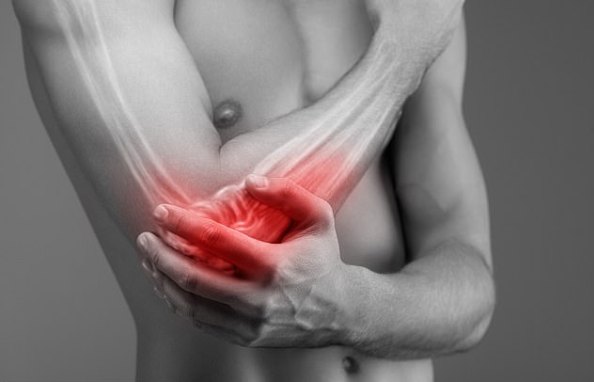Scientists have discovered an organ in the skin that causes people to experience pain
Scientists discover a new ORGAN in the skin that causes us to feel pain 'in breakthrough that could help doctors tackle the daily agony of millions'
- Mesh-like organ within the skin consists of glial cells; have hair-like structures
- These structures are thought to be sensitive to external stimuli, like heat
- When glial cells were blocked in mice, their sensation of pain reduced
Scientists have discovered an organ in the skin that may cause people to experience pain.
Up until now, experts believed nerve fibres in the skin were responsible for picking up on uncomfortable stimuli, like pricks and blows.
But a team at the Karolinska Institute in Sweden have discovered a mesh-like organ within the skin that consists of glial cells. It is yet to be named.
Glial cells are surrounded by hair-like structures that are thought to be sensitive to external stimuli.
When this network of cells were blocked in mice, it reduced their sensation of pain, the researchers claim.
They hope their study will help experts 'understand chronic pain', which could lead to new treatments for the millions of sufferers.
'Our study shows sensitivity to pain does not occur only in the skin's nerve fibres, but also in this recently discovered pain-sensitive organ,' lead author Professor Patrik Ernfors said.
'The discovery changes our understanding of the cellular mechanisms of physical sensation and it may be of significance in the understanding of chronic pain.'
Chronic pain, defined as that which lasts three months or longer, affected two-fifths of people (28 million adults) in the UK in 2016, according to The British Pain Society (BPS).
And in the US, around 50 million Americans (just over 20 per cent of adults) are said to suffer, a Center of Disease Control and Prevention report stated last year.
Experiencing pain is an 'essential prerequisite for the survival of an organism', the researchers wrote in the journal Science.
The unpleasant sensation triggers a reflex action that prevents damage to tissue, such as automatically pulling your hand away when you burn yourself.
However, pain also causes suffering and can be costly to society if people have to take days off work, the researchers wrote.
Back pain alone is said to be responsible for 40 per cent of the sick days taken within the NHS and overall sets the UK economy back £10 billion ($12.1bn) a year, according to the BPS.
One study showed chronic pain costs the US up to $635bn (£769bn) a year, which is more than cancer, heart disease and diabetes.
Glial cells were once thought to just surround and protect the nerve cells that trigger pain.
To learn more, the researchers fluorescently tagged cells that are involved in pain in mice to determine how they interact with each other.
They found that when the rodents were exposed to a stimulus like heat, pain-sensitive nerves in the the mesh-like layer became activated.
This caused electrical signals to be fired out in the nervous system, leading to a reflex action.
When the researchers blocked the mesh-like organ, the animals experienced a reduced ability to feel 'mechanical' pain.
Mechanical pain typically refers to discomfort in the back caused by abnormal stress to the spine.
WHAT IS PAIN?
Health professionals use different terms for different types of pain.• Short-term pain is called Acute Pain. An example is a sprained ankle.
• Long-term is called Persistent or Chronic Pain. Back trouble or arthritis are examples.
• Pain that comes and goes is called Recurrent or Intermittent Pain. A toothache could be one.
Pain signals use the spinal cord and specialised nerve fibres to travel to our brain.
Pain is never "just in the mind" or “just in the body” - it is a complex mix involving our whole being.




No comments
Post a Comment